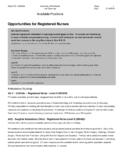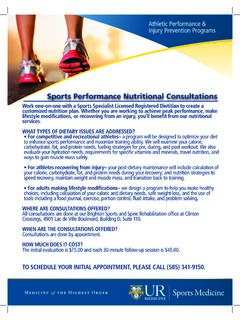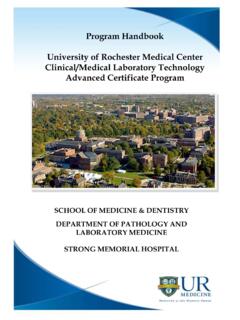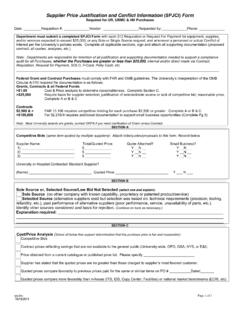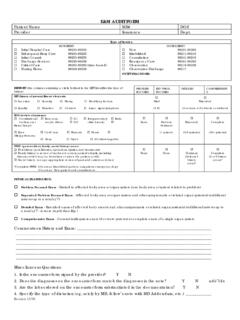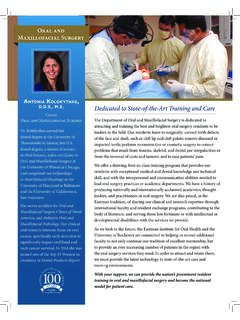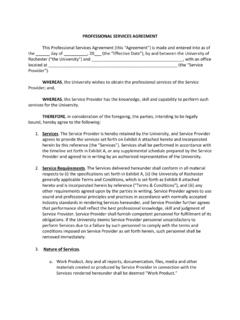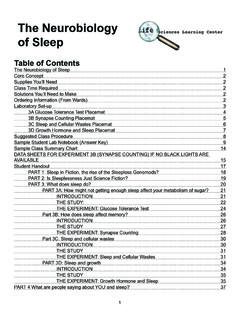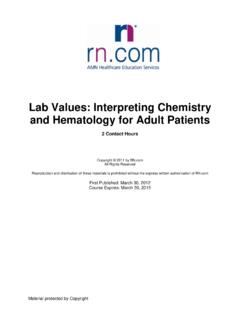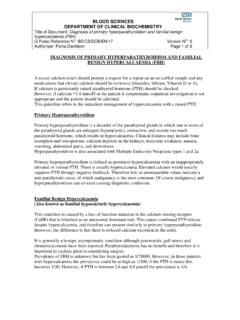Transcription of COMMON LABORATORY VALUES - University of Rochester
1 STEPHANIE ZIELINSKI, CPNP, DNPCOMMON LABORATORY VALUESCOMMON LABORATORY VALUES LABORATORY tests are an integral part of every day practice within health care. Lab work can help assess and diagnose patients with both acute and chronic illness. COMMON LABORATORY TESTS Complete Blood Count with Differential Basic Metabolic Profile Iron Studies (TIBC, Ferritin) Thyroid Studies (TSH, Free t4) Vitamin D Lipid PanelCOMMON LABORATORY TESTS Complete Blood Count with Differential aka CBC with Diff Components of a CBC with differential: Total red blood cell count (RBC) Hemoglobin (Hgb) Hematocrit (Hct) Mean Corpuscular volume (MCV) Red blood cell distribution width (RDW) Total white blood cell count (WBC) A count (%) of each type of white blood cell (Neutrophils, Lymphocytes, Monocytes, Eosinophils, Basophils) Platelet count(The Mayo Clinic, 2016.)
2 Up to Date, 2016) COMMON LABORATORY TESTS What does each finding mean? Total red blood cell count (RBC)- The count of the number of circulating red blood cells in 1 mm3of peripheral venous blood. Hemoglobin (Hgb)- The measure of the amount of Hgbin the blood. Hgb constitutes over 90% of red blood cells. COMMON LABORATORY TESTS A decrease in Hgb concentration means the patient is anemic. Anemia can be due to iron/B12/folate deficiency, blood disorders or other underlying pathology. And increase in Hgb concentration means the patient is polycythemic. Polycythemia can result from a large number of causes, including cancer, lung disease, heart defects and other underlying pathologies.
3 Smoking and many lung conditions can cause an elevated Hgb due to chronic hypoxia. COMMON LABORATORY TESTS Hematocrit- The measure of the percentage of the total blood volume that is made up by the red blood cells. Mean corpuscular volume (MCV)- a measure of the average size of a red blood cell. The MCV is important in classifying anemias: Normal MCV = normocytic anemia Decreased MCV = microcytic anemia Increased MCV = macrocytic anemiaCOMMON LABORATORY TESTS Red blood cell distribution width- An indication of the variation of the red blood cell size (anisocytosis). In general an elevated RDW (more variation in the size of the RBC s) is associated with anemias with various deficiencies such as iron, B12 or folate deficiencies.
4 COMMON LABORATORY TESTS What does each type of anemia mean?Macrocytic Anemia- In adults, COMMON causes of macrocytic anemia are: Medications (ex: Zidovuidine, Hydroxyurea), folate deficiency, abnormal RBC maturation (Ex: Leukemia), alcohol abuse, liver disease and hypothyroidism In children COMMON causes of macrocytic anemia are: Medications (anticonvulsants, Zidovudine and immunosuppresents), Vitamin B12 and folate deficiencies, liver disease and hypothyroidismCOMMON LABORATORY TESTS What does each type of anemia mean?Microcytic Anemia- In adults, COMMON causes of microcytic anemia are: Reduced iron availability (iron deficiency, copper deficiency), Alpha or beta thalassemia and anemia of inflammation (chronic disease).
5 In children COMMON causes of microcytic anemia are: Iron deficiency and thalassemia COMMON LABORATORY TESTS What does each type of anemia mean?Normocytic Anemia- In adults, COMMON causes of normocytic anemia are: Systemic disorders, chronic renal disease In children COMMON causes of normocytic anemia are: Hemolytic disease, blood loss, infection and medicationCOMMON LABORATORY TESTS Testing for iron deficiency:Total Iron Binding Capacity (TIBC)- Will be elevated when a patient is The cellular storage protein for iron. Iron deficiency results in a low ferritin level. Iron deficiency is the only clinical situation in which extremely low VALUES of serum ferritin are seenCOMMON LABORATORY TESTS White Blood Cells- Lymphocytes- Comprise about 30-40% of circulating white blood cells.
6 Atypical and an elevated number of lymphocytes can often be seen following viral infections. Other causes of atypical lymphocytes or lymphocytosis can be lymphoma or leukemia. If a patient has lymphocytosis in addition to thrombocytopenia, neutropenia or anemia, this is concerning for malignancy. Patient should be referred immediately for hematology/oncology evaluation. COMMON LABORATORY TESTS Neutrophils- 40-60% of circulating white blood cells. Neutrophils mature in the following order: Myeloblast -> promyelocyte -> myelocyte -> metamyelocyte -> band -> mature smear results with any cells seen that are less mature than a myelocyte are almost always associated with hematological malignancy.
7 This warrants immediate hematology/oncology increased number of bands is called a left shift and is often associated with infection. COMMON LABORATORY TESTS A low level of neutrophils is Neutropenia. A low level of neutrophils can increase the risk of infection. Neutropenia can be caused by malignancy, immunosuppression or be idiopathic. An elevated Neutrophil count (Neutrophilia) is most commonly seen with infections, stress, smoking and after exercise. COMMON LABORATORY TESTS Basophils- Comprise <1% of total WBC. An elevated basophil count is most commonly associated with myeloproliferativedisorders, hypersensitivity or inflammatory reactions, hypothyroidism, and certain infections.
8 Eosinophils- Normally present in small numbers (< 5% of WBC s). Elevated level can indicate allergic state or parasitic infection. Less commonly it can indicate a malignancy. Monocytes- The largest of the WBC s. Elevated monocyte level is most commonly associated with infections, autoimmune disorders, malignancy and blood disorders. COMMON LABORATORY TESTSP latelets Thrombocytopenia- (low platelet count)- Most commonly seen due to medications (antibiotics, antiepileptics), infection, blood disorders and liver disease. The presence of a very high platelet count, extremely large platelets, and/or megakaryocyte fragments is abnormal and often associated with an underlying LABORATORY TESTS Basic Metabolic Profile Comprised of: Sodium (Na) Potassium (K) Chloride (Cl) Carbon Dioxide Content (CO2) Blood Urea Nitrogen (BUN) Serum Creatinine (Cr) Serum Glucose (Glu) Total Calcium (Calcium) COMMON LABORATORY TESTS Sodium (Na) Hyponatremia- Sodium is low.
9 This is not a COMMON finding and is often associated with heart failure, burns, malnutrition and severe diarrhea. Hypernatremia- Sodium is elevated. This is commonly associated with three main issues: Un-replaced water loss- diarrhea/vomiting, excessive sweating, diabetes insipidus, diabetic ketoacidosis water loss into cells- usually transient, typically induced by severe exercise or electroshock induced seizures. sodium overload- salt poisoning, hypertonic saline administrationCOMMON LABORATORY TESTSP otassium (K)Hypokalemia- A low level of potassium. Hypokalemia is most commonly caused by the use of diuretics, severe burns, Cushing s syndrome, acute GI illness, hyper-aldosteronism, and renal disease.
10 COMMON LABORATORY TESTSP otassium (K)Hyperkalemia- Elevated potassium, caused by three main mechanisms: Excessive increase in potassium intake Trans-cellular movement of intracellular potassium into the extracellular space Decreased renal excretion of potassiumCOMMON LABORATORY TESTSP otassium (K) Excessive increase in potassium intake- typically caused by a high potassium containing medication or IV fluid. Trans-cellular movement of intracellular potassium into the extracellular space- metabolic acidosis or breakdown of normal tissue or rapid cell lysis causing potassium to be released into the extracellular space; ex. Renal failure, tumor lysis, rhabdomyolysis.
